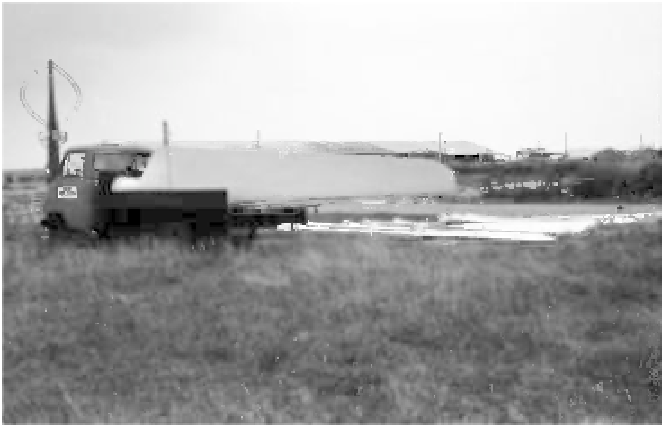Environmental Engineering Reference
In-Depth Information
8.4
Big Players
One year later, in August 1979, a visionary “green majority” of the
Danish parliament passed a Bill that entitled people who wanted
to buy a wind turbine to be eligible for a grant that would cover
30% of the turbine price. To ensure, that only soundly engineered
turbine designs were subsidised, the government established a
test station
for wind turbines at Risø. As one of Risø's first acts,
they made it mandatory to employ an airbrake system on the
turbine to be approved. For some time this gave my company a
sort of monopoly, as my most serious competitor, the Riisager
turbine was not equipped with airbrakes. In the following years my
company, named “Økær Vind Energi”, had a growth in turnover of
more than 400% each year, and I frequently employed new staf.
Most blades were delivered to self builders and small blacksmith
companies.
In 1979 Vestas entered a license agreement with Karl Erik
Jørgensen and Henrik Stiesdal, and thus their turbine design
became the beginning of the Vestas wind turbines. As Økær Vind
Energi delivered the blades for the Herborg turbines, we then
became a supplier of blades for Vestas. Vestas was a well renowned
family owned company, with some international sales in the
agricultural machines business as well as the crane-producing
department.
Figure 8.8
Økær delivering 7.5 m blades at Vestas in 1980.



Search WWH ::

Custom Search